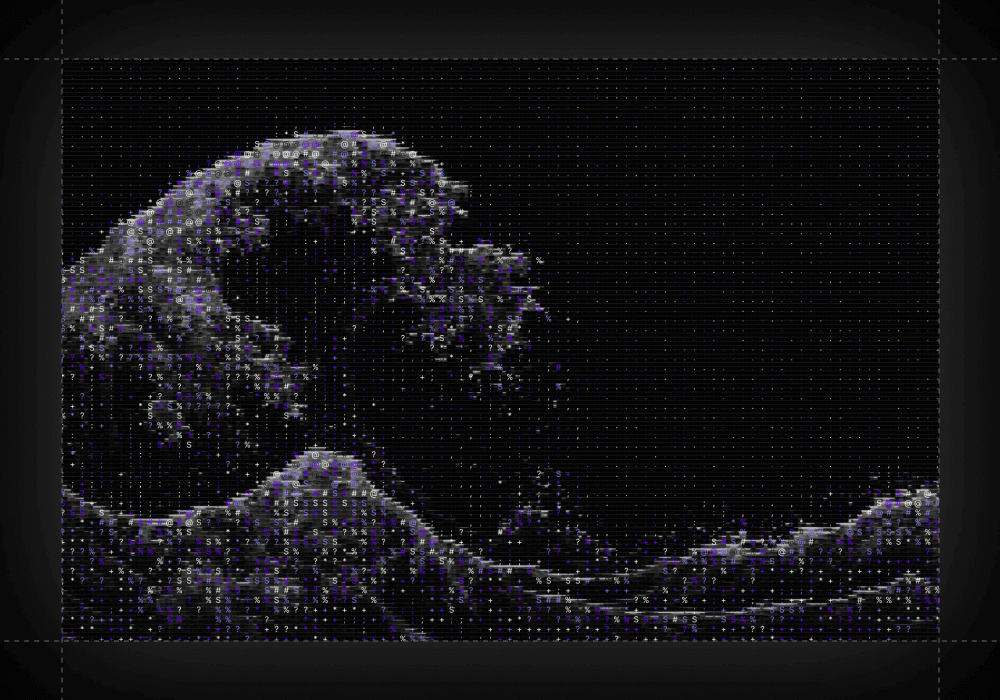Demystifying Skincare: Sharing the Fig.1 Journey
Share

My skincare education started with my mom’s magazines. After receiving my first Clinique “yellow cream” as a tween, I’d devour the glossy pages like I was cramming for a test. This new product universe inspired a sense of wonder: evocative product names; magical ingredients; dramatic transformations. By the ripe age of 11, I was parked under an umbrella and preaching the importance of sunblock to anyone who would listen. Nonetheless, these magazines began a heartfelt, lifelong journey to both uncover the pillars of good skincare, and share my learnings with others.
Empowering consumers with the knowledge to both identify and gain access to top-quality products and services has been the common thread throughout my career. Although my job description is “Partner at 8VC”, I identify as a maker and entrepreneur first, and this is a common thread across our firm. I’ve built multiple companies at the intersection of consumer goods and healthcare, from changing how Americans pay for prescriptions to developing femtech products to make our periods work better for us.
Whether building or investing at 8VC, I aim to optimize for cost, convenience and quality — this is our north star as we assess the consumer landscape. Most companies can only achieve one or two, honing in on convenience and price at the expense of quality. This mental model seeped into my own purchasing, forcing me to take a hard look at how I consume my first and lasting “vice”, skincare.
Skincare is healthcare, and skin is your largest organ! In contrast to the cold, clinical environments we associate with healthcare, skincare is mostly administered at home. It is a highly ritualistic practice demanding knowledge, yet it falls to us to create a routine that works. Whether I have two minutes or twenty, my regimen represents time I’ve reserved to reflect, decompress and rejuvenate. An act seemingly focused on the surface reaches much deeper.
In time, the skincare journey inevitably gets more complex. Like many, my moment of reckoning arrived with my first fine lines. My staple creams and serums no longer seemed to do the trick — in fact, my medicine cabinet was overflowing with pricey, half-used products that were failing me when I needed them the most. As I began applying a more critical eye and unpacking the science behind these products, I realized their once-exotic ingredient lists now read like gibberish. My ritual had masked a gaping hole in my regimen: efficacy.
For the next three years, I scoured the landscape to assemble a powerhouse brain trust that could steer me through the noise towards skincare that works. I’ve had the privilege of relying on eminent practitioners, such as dermatologist Dr. Panta Rouhani Schaffer and esthetician Lisa Shannon, to educate me on the treatment table. We started with potent active ingredients as building blocks, layering over them to understand what makes an effective product formulation.
As I began to better understand industry dynamics as well as the science behind skincare, the following fault lines became apparent:
- Good Chemistry is Hard: Developing efficacious products in-house is time-consuming and costly. Many brands use off-the-shelf formulations, leaving consumers with outdated, recycled formulas. Worse, brands often lean on marketing departments for product development. These products are formulated with a healthy dose of filler materials, given a sprinkle of active ingredients, and saturated with vacant promises.
- Empty Pledges and Packaging: Instead of explaining the formulation, packaging serves as a billboard for baseless claims. Worse, the products are packaged without the ingredients in mind. High-potency ingredients can be volatile, and require protection from light and air. For most brands, packaging is a branding opportunity, when it should be an instrumental part of product delivery.
- High Cost, High Waste: Skincare is expensive and opaque, and it’s uncertain whether you’ll derive value from a purchase. On average, women toss out twenty half-used products per year ($288 in value), and use twelve mostly unnecessary personal care products per day.
- Siloed Knowledge: Consumers have little access to trusted sources and individualized care. There is only one dermatologist for every 34,000 Americans, and their focus is usually skin cancer, not overall skin health. In their place, social media pseudo-experts and misleading advertisements have proliferated.
The consumer is vastly underserved by an industry stuck in the status quo and lacking in substance.
Having experienced real expertise, I was certain of two things: a better skincare experience was possible, and consumers deserve nothing less. The onus should be on brands to deliver reliable, quality products and information, not on the buyer to do the detective work.
An ambition of this magnitude requires a platform to realize its full potential. Our 8VC Build program was created for these exact circumstances: developing something new and category-creating, often correcting information asymmetries and bringing functionality to fractured industries in the process. In this case, the result was Figure 1 Beauty (Fig.1).
In the course of my research, I was fortunate to find kindred spirits eager to rethink the consumer skincare experience, beginning with my co-founders. Dr. Courtney Rubin (Chief Medical Officer) is a Harvard-trained dermatologist, now in private practice. Seeing how many patients could barely afford copays, she couldn’t recommend exorbitantly priced moisturizers, and wanted to create something for everyone. Lizzy Trelstad (Head of Chemistry) is an incredible scientist who was frustrated that marketing teams largely drove formulation briefs, disregarding efficacy and ingredient transparency. Together, we’ve assembled the Avengers of Skincare. Unlike many deliberately faceless brands, Fig.1’s story is our story — and our customers’ as well.
Above all, we’re guided by one common goal: Demystify skin health to make great skin achievable for everyone. This goal is reinforced by Fig.1’s core values:
- Formulation Efficacy: We’ve developed our clinically proven formulations from scratch. We’ve removed the fluff, selecting each ingredient intentionally and scientifically. At 8VC, we firmly believe in science-backed products — this is table stakes whether we’re building or investing.
- Packaging Supports Formulation: Active ingredients need the right home to stay fresh and potent. We use airless, refillable packaging to preserve efficacy and reduce waste.
- An Accessible Price Point: High prices don’t equal efficacy, and great skincare should not break the bank. All products in our launch lineup are $14-$40.
- Expert Service, At Your Fingertips: We leverage the expertise of licensed estheticians, who have unparalleled training in client-led skincare and product knowledge, and help fill the cosmetic dermatology gap. We use technology to deliver professional, individualized skincare guidance to our customers — a simple, one minute quiz won’t cut it.
- Built for You: Skincare doesn’t happen in a vacuum. We’re committed to making Fig.1 work seamlessly alongside your staples. In some cases, you may require a blend of actives we have yet to formulate (don’t worry, our product pipeline is stacked!). In the meantime, we recommend alternative brands thoroughly vetted by our estheticians.
Since Fig.1 launched in June 2021 out of 8VC’s Build program, it has been a whirlwind of growth and rapidly compounding experience. Below are a few highlights (at least, among the ones we can talk about!).
Fig.1’s accessible price point is complemented by its availability. “For everyone” means highly diversified points of sale suitable for a wide spectrum of consumers. Building on the theme of people you trust, we’ve emphasized dermatologists and estheticians as a key channel. We’re available on walmart.com and testing end caps at select Walmart locations. We’re rolling out to more major retailers in the near future, both in the US and abroad. We’ve also partnered with one of the most popular subscription box services, introducing Fig.1 to a new kind of shopper.
We are also emerging as a product development machine. We’ve bulldozed through the industry-standard 36+ month development process, bringing all six of our original launch products to market within a year. In contrast to typical off-the-shelf formulations, with no transparency or straightforward sourcing of ingredients, we’ve developed everything in-house, often collaborating with our key opinion leader board and advisors. And we’re helping to democratize skincare for brands as well as consumers. Indie brands often partner with big players, and they receive a subpar experience given long timelines, tired formulation selection and limited visibility into the black box that is the manufacturing process. We’re upending this dynamic, helping other companies develop their formulations and demonstrating the incredible things you can do when focused on achieving the desired effect.

By far one of the most exciting moments of our journey arrived last month, when we announced that Ashley Graham has joined Fig.1 as an investor and partner. While Ashley is a world-renowned model, to simply give her this title would be a disservice — she’s also a businesswoman, writer, producer, and a passionate advocate for body positivity. In contrast to the perception of models as flawless, she has been refreshingly open about her own struggles with rosacea and postpartum skin challenges. She’s someone who embodies our values and walks the talk.

Ashley has been a longtime supporter, since the days when our products were limited to a few lab samples. She’s an investor, as she detailed here, and a partner in our product development process, joining the weekly meetings where we discuss product feedback and our pipeline. She understands that a major part of Fig.1 being accessible and accountable to customers is that we’re never done formulating.
“Everyone should have access to great, personalized skincare without having to splurge. Fig.1 is making that happen by providing affordable, quality products that truly work, as well as daily access to skincare experts.”
Ashley
We built Fig.1 to meet consumers where they are — understanding their existing relationships with skincare as well as the products found in their medicine cabinets. First and foremost, skin health is our top priority. This has always been our driving force, and we aim to educate and empower consumers to feel confident in their healthcare decisions. Fig.1 is here to serve as your trusted skincare resource: removing barriers, demystifying the science and making great skin accessible.






.png)




.gif)